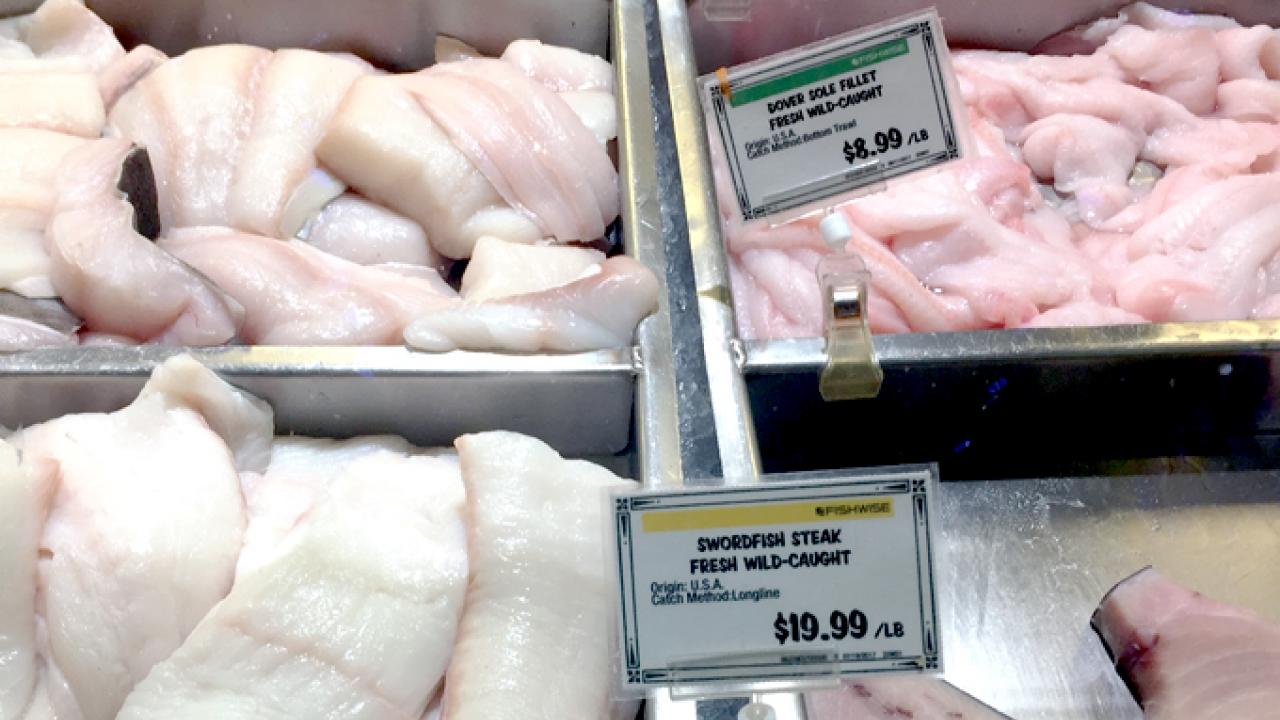
Can We Eat Fish and Protect it too?
Seafood is low in fat, high in protein, and a great source of Omega 3 fatty acids, which doctors say can boost brain development and help prevent ailments like depression, arthritis, and heart disease.
Health benefits are one reason people are eating more fish. The United Nations reports that global per capita fish consumption has hit a record high and continues to climb.
Can fisheries sustainably keep up with rising demand? What is “sustainable seafood” anyway?
“Today, the term encompasses biology of the seafood stock, economics, the social and cultural aspects of fishing, labor practices, and food security,” said Jim Sanchirico, professor of environmental science and policy. “It needs to be economically viable for harvesters to make a reasonable living. Sustainability has a lot to do with how fish are managed in other parts of the world.”
The seafood supply chain is long and complex, especially for consumers in California where close to 80 percent is imported. It is easy to “shop local” when buying produce in the Central Valley, but that is not the case with seafood. Labels that certify “sustainable” can guide consumers, but labels can be confusing, too.
“Is it better to buy fish without a label from a supplier you know is well managed or fish with a label from somewhere less transparent?” Sanchirico asks. “If I pay more for sustainable seafood, will any of that premium make its way back to the fisherman who caught it?”
The questions are not rhetorical. Sanchirico and colleagues are working to improve and demystify sustainable seafood certification so consumers will know when they invest in “sustainable” seafood they are getting the real deal.
What does it mean to fish sustainably?
At sustainable fisheries, seafood is well-managed with healthy levels of stock. Sustainable fishing minimizes “bycatch,” or inadvertently snagging other sea creatures like turtles, seabirds, and sharks. It avoids destructive fishing methods like blasting fish with dynamite, a practice sometimes seen in developing countries.
The Marine Stewardship Council (MSC) is perhaps the world’s best-known
accreditor of sustainable seafood. The nonprofit requires fisheries meet detailed, traceable standards before certifying sustainability.
Ten years ago, big retailers like Walmart announced they would soon start selling only MSC-certified seafood, which seemed like good news for the sustainability movement. Except, the demand for MSC-certified seafood increased sevenfold after the announcement, and there still is not enough supply to meet the demand. Suppliers are scrambling for certification and standards can suffer.
To bridge the gap, some suppliers participate in “Fisheries Improvement Projects” (FIP) that give fisheries access to the sustainable seafood market if they develop a plan to improve ocean management.
But as Sanchirico points out in an article in the journal Science, two out of three FIP-participating fisheries in developing countries—which provide half of all the seafood in the international market—have not made concrete steps toward implementing their plans. Many have been treading water in the planning stage for several years while still selling so-called sustainable seafood.
Securing seafood from developing countries
Sanchirico does not want to give up on Fisheries Improvement Projects.
“They are a positive step in meeting the demand for sustainable seafood,” he said. “But we need better oversight to make sure fisheries are working through the process.”
Sanchirico and his team travel to Southeast Asian countries like Indonesia and the Philippines to study the dynamics of fishing in developing countries. They talk with townspeople and government officials to predict how different fishing policies would affect local economies, and the rich and poor within those communities.
“Fisheries Improvement Projects need to be fine-tuned, but we can’t do that without understanding the social and ecological systems in which they operate,” Sanchirico said.
On the horizon
Sanchirico sees a day when shoppers can walk into any grocery store and know that everything at the fish counter is 100 percent verified sustainable.
“It would take away a lot of the guesswork,” he said.
Signs are encouraging.
Conservation groups are working with researchers to improve the science that underlies certification, and UC Davis scientists are helping explore aquaculture, the practice of farming fish. There is a lot to consider, such as the proper holding pens and technology, and which species might be best suited for cultivation.
“There are concerns and complexities with farm raised versus wild caught,” Sanchirico said. “But responsible aquaculture can play a role in meeting the demand for sustainable seafood.”
In the meantime, what is a sustainable-seafood shopper to do?
Monterey Bay Aquarium manages seafoodwatch.org, a site that offers up-to-date, regional advice on what seafood is currently a best choice, a good alternative, or should be avoided for now.